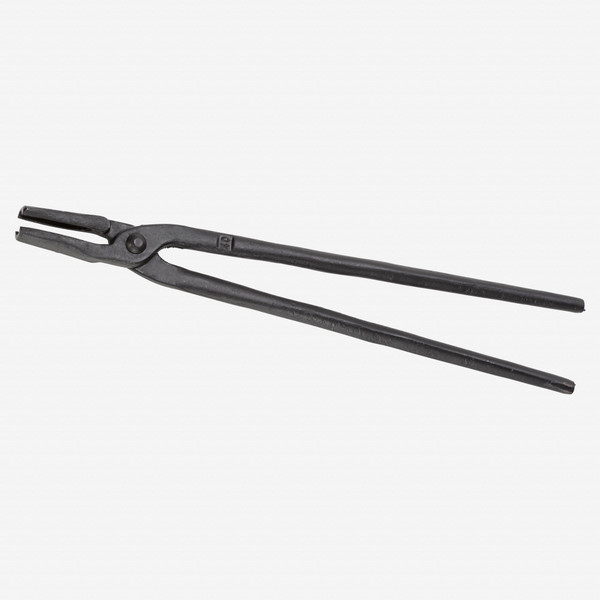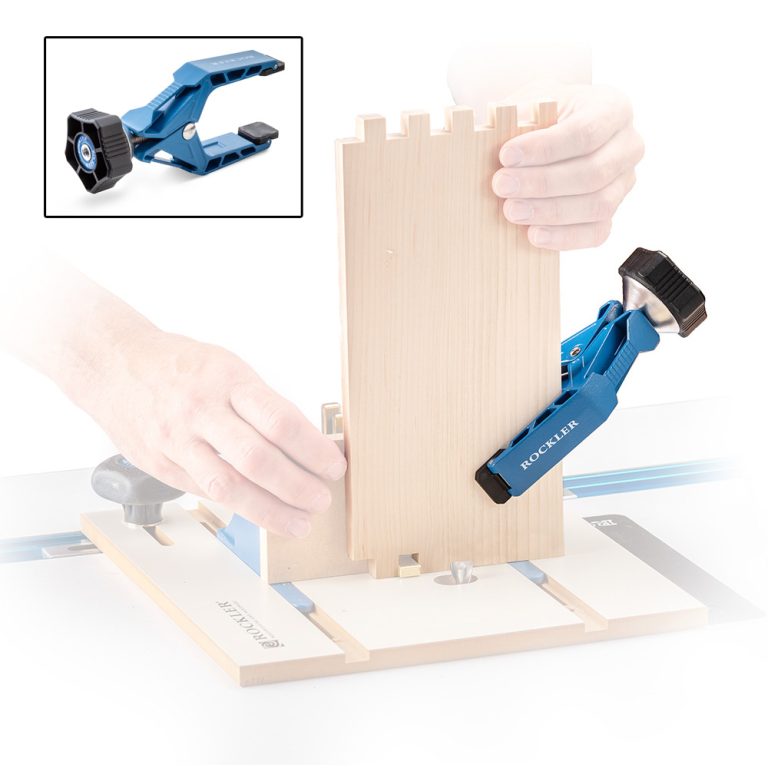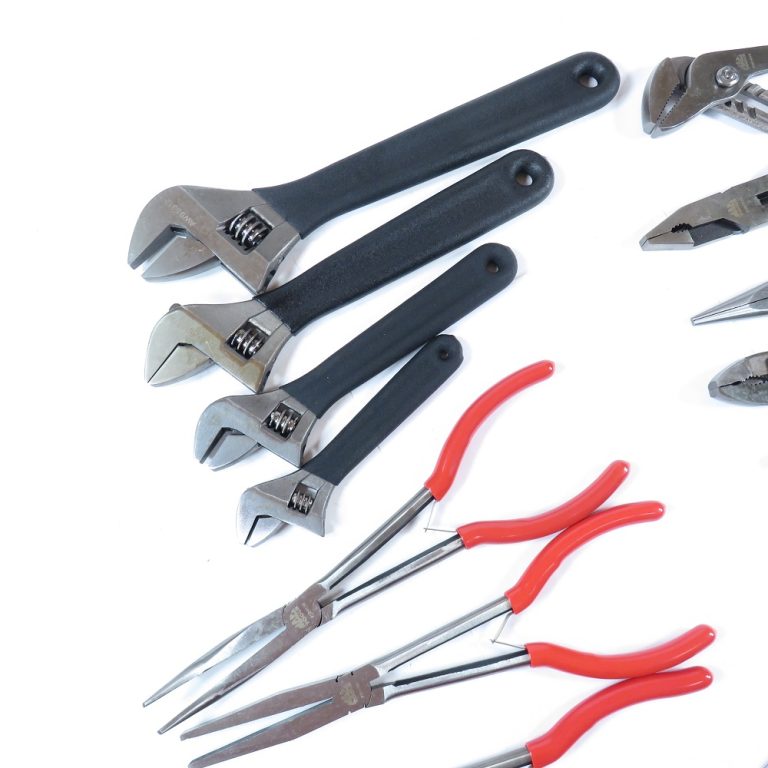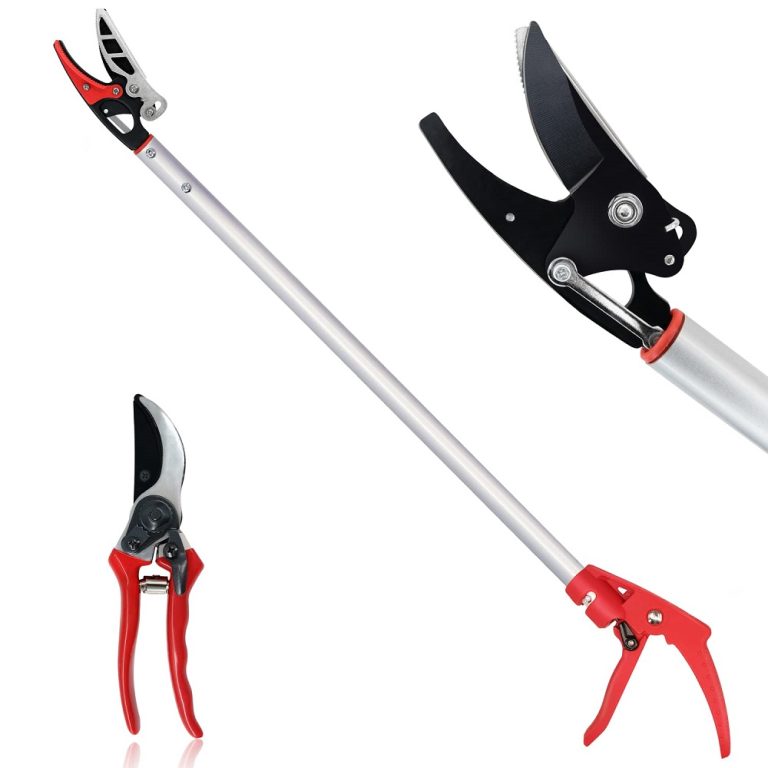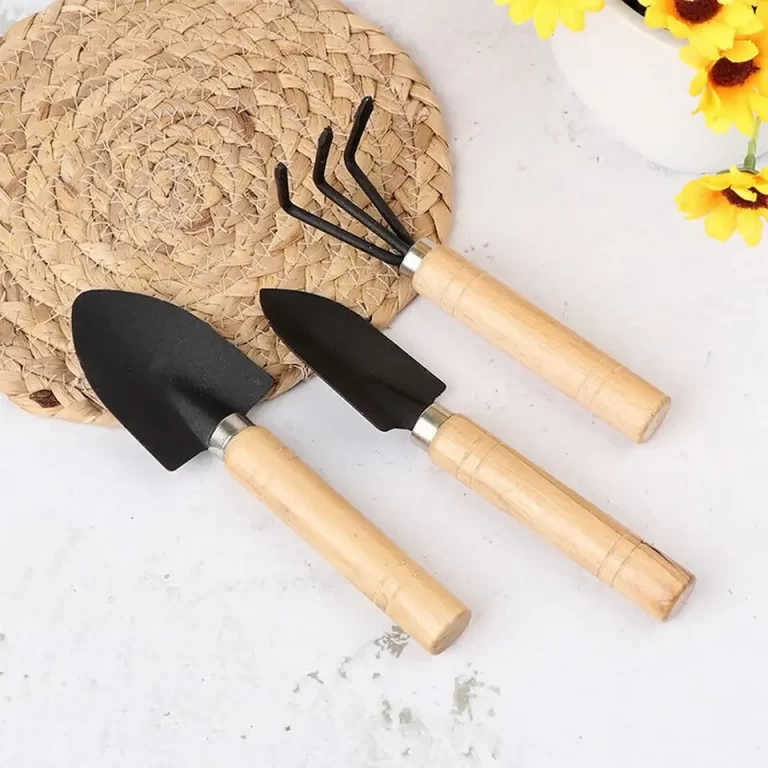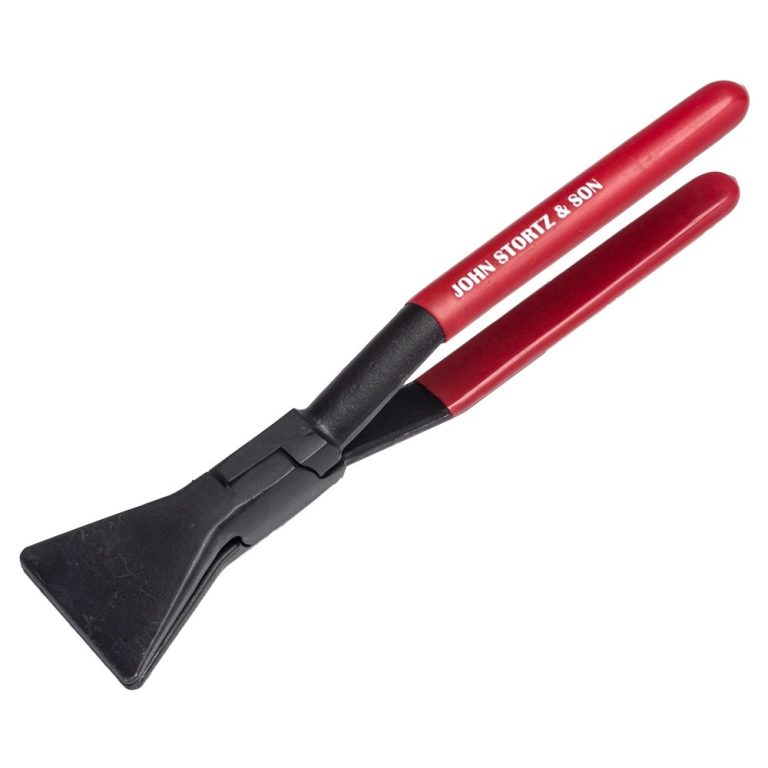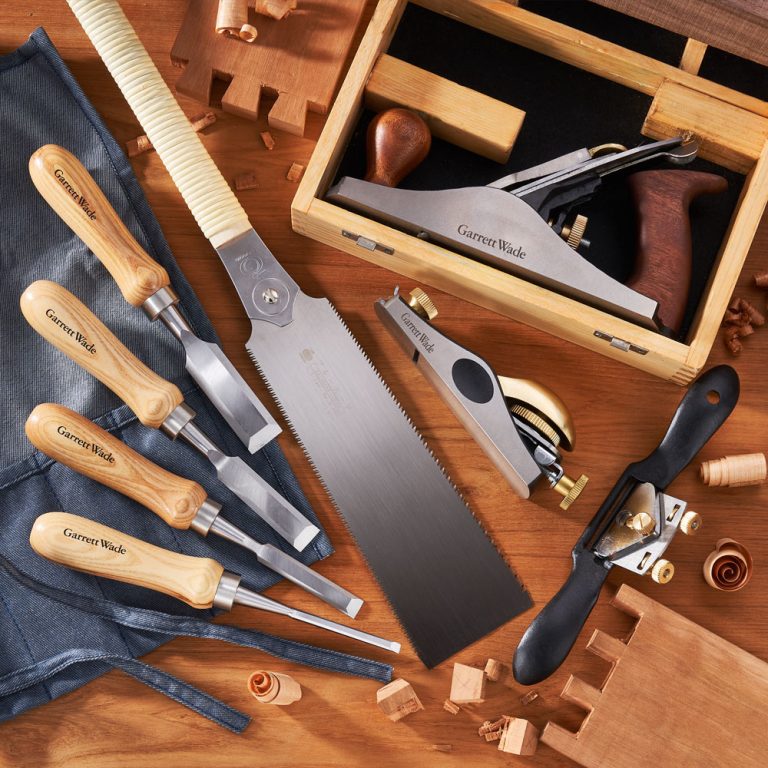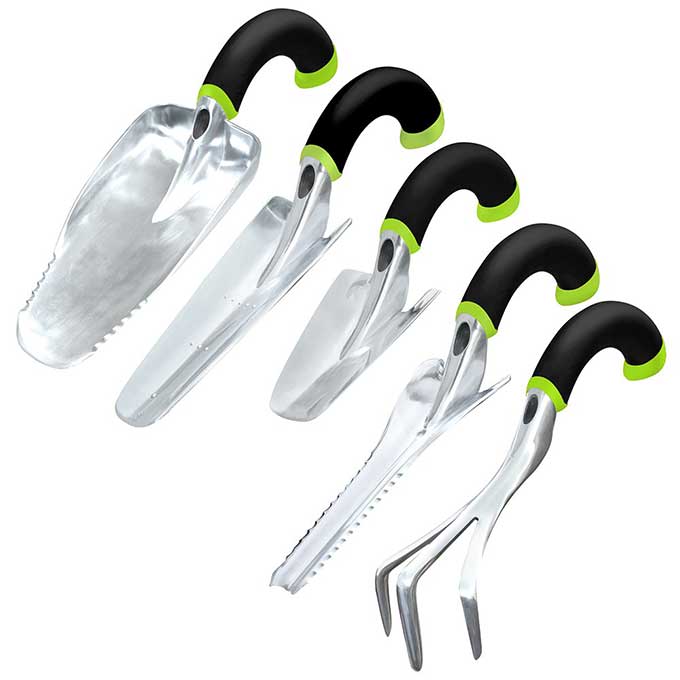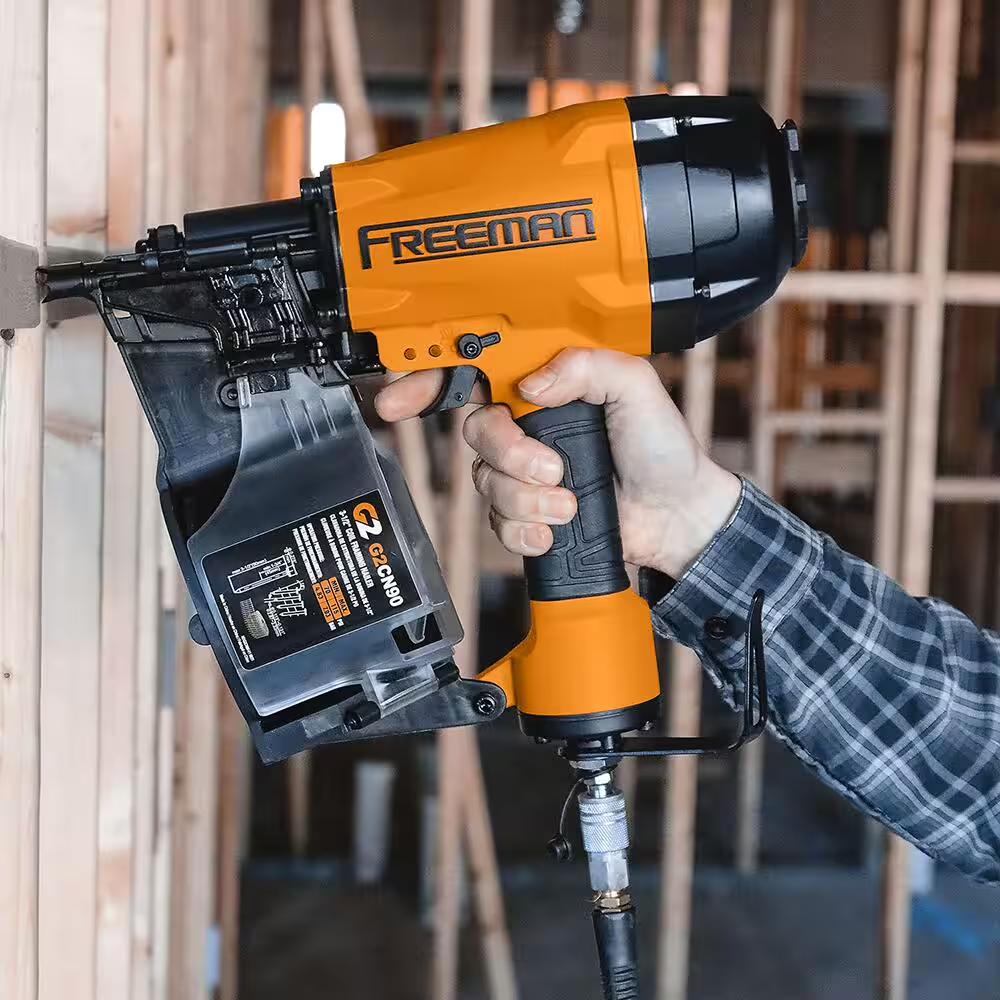Blacksmithing is an ancient craft that has captivated people for centuries. As a blacksmith, you shape and manipulate metal through heat and tools to create everything from decorative items to functional tools and weapons. For those interested in blacksmithing, having the right tools is essential for both safety and performance. Understanding the features and purposes of the various blacksmith tools allows you to create efficiently and beautifully. This guide provides a comprehensive overview of must-have blacksmith tools, exploring their functions, types, and tips for building a solid blacksmith toolkit.
Understanding Blacksmithing Basics
What is Blacksmithing?
Blacksmithing is the art of shaping and crafting metal using heat, tools, and craftsmanship. This traditional skill involves forging metals such as iron and steel, allowing the blacksmith to produce goods ranging from horseshoes to intricate decorative pieces. The blacksmith’s forge is a central element in this process, providing the necessary heat for transforming hard metals into pliable shapes. Blacksmithing has evolved over time, expanding into various techniques and styles, making it a dynamic and diverse art form. Understanding the background and evolution of blacksmithing enriches your appreciation of the craft.
The Importance of Quality Tools
Quality tools play a significant role in the blacksmithing process. Good tools influence your efficiency, safety, and the quality of your finished products. Investing in high-quality tools ensures you have the best equipment for your craft and can prevent injuries due to tool failure or inadequacy. In addition, your choice of tools can affect the precision of your work, ultimately influencing the overall aesthetics of your creations. Knowing that you are equipped with reliable, durable tools fosters greater confidence in your ability to produce exceptional work.
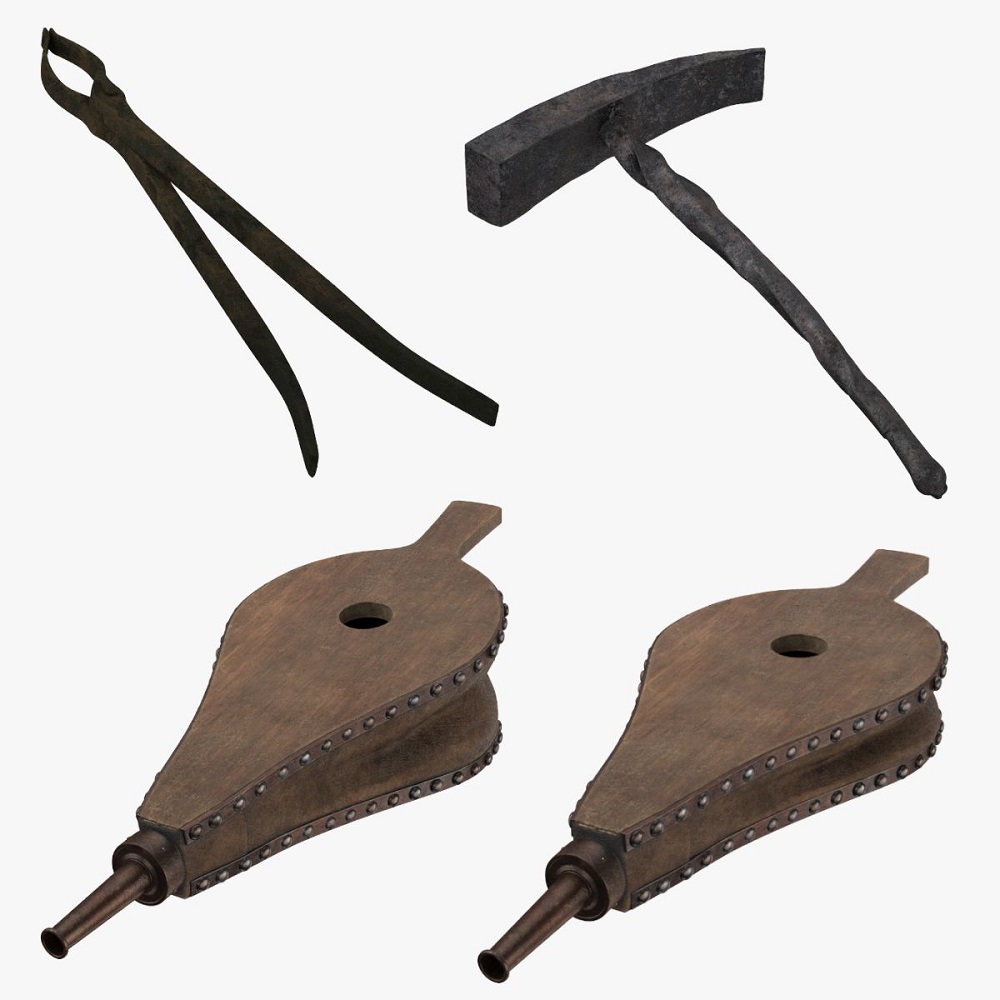
Essential Blacksmithing Tools
The Forge
The forge is the heart of any blacksmithing operation. It provides the intense heat required to soften metal, allowing it to be shaped and formed. There are several types of forges available, including coal forges, gas forges, and induction forges. Each type has its benefits. Coal forges provide consistent heat and classic charm but may require more maintenance. Gas forges are more user-friendly and efficient, offering adjustable temperatures for different tasks. Selecting the right forge depends on your preferences, budget, and available fuel sources. Understanding the specific strengths and limitations of each type will help you choose a forge tailored to your needs.
Anvil
The anvil is a crucial piece of blacksmith equipment, serving as a sturdy surface for shaping hot metal. Anvils come in various weights and designs, typically ranging from 50 to 300 pounds. A quality anvil features a smooth working surface, a hardy hole for various tools, and a polished top to aid in metalworking. Choosing an anvil that suits your work style and the types of projects you pursue is important. A good anvil is an investment that will improve the quality of your work and stand up to years of use.
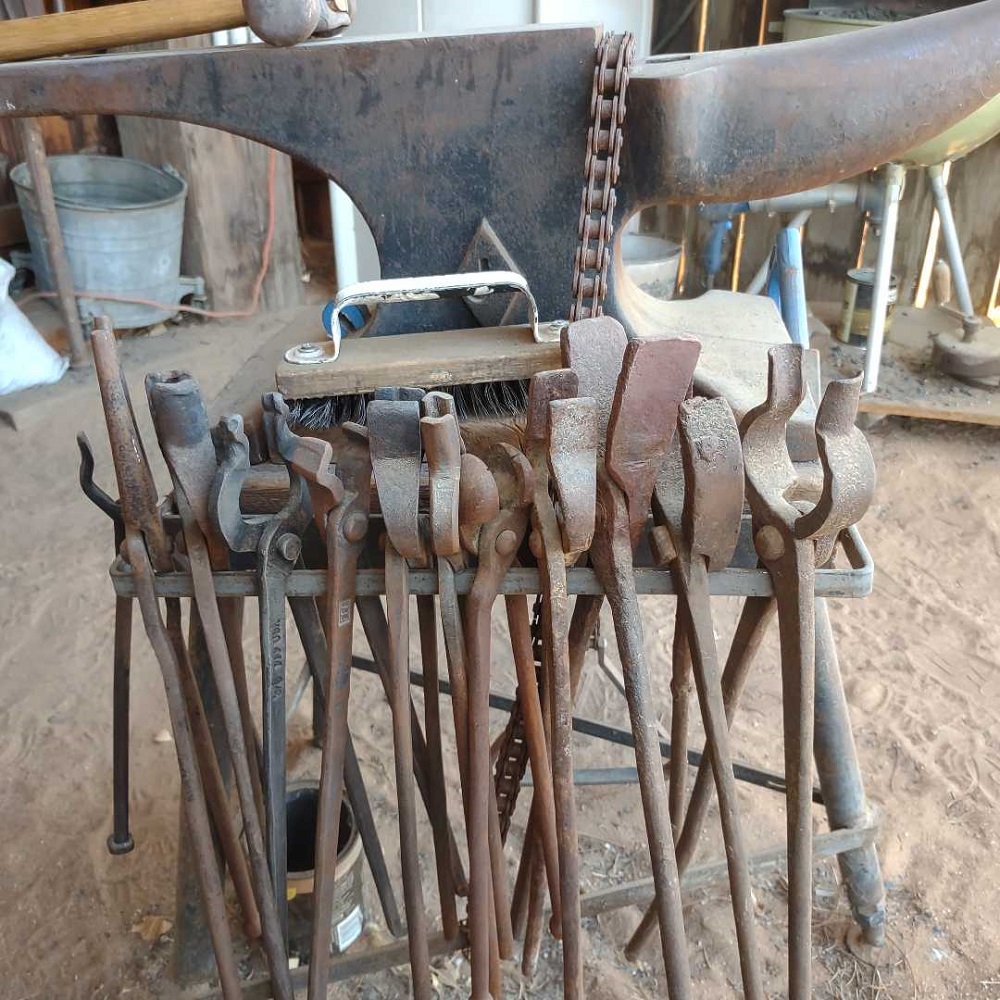
Hammering Tools
Blacksmith Hammers
Hammers are fundamental tools for shaping hot metal in blacksmithing. There are several types of blacksmith hammers available, each designed for specific purposes. The most commonly used hammers are the cross-peen hammer and the ball-peen hammer. The cross-peen hammer features a flat head for striking and a cross-shaped peen for adding texture to the metal. The ball-peen hammer has a rounded end, ideal for shaping and smoothing. Each hammer type serves a unique function, and selecting the right hammer for your specific projects will enhance your efficiency and precision while working with metal.
Tongs
Tongs are critical tools in blacksmithing that allow you to handle hot metal safely. Grasping and manipulating hot materials without proper tools can lead to serious burns or accidents. Various styles of tongs exist, including flat-nosed, round-nosed, and pick-up tongs. Each type is designed for different metalwork applications. Investing in high-quality tongs will aid in the efficiency of your work and improve your overall safety. Choosing tongs that fit comfortably in your hands ensures better control and grip, especially when working with heavy materials.
Shaping and Finishing Tools
Chisels
Chisels are essential for cutting and shaping metal in intricate designs. They come in various forms, such as hot chisels designed for use on heated metal and cold chisels for working with cooled, hardened materials. When selecting chisels, consider the types of projects you want to undertake, as different chisels are suitable for different applications. For example, a hot chisel can allow you to make precise cuts and curves in heated metal, while a cold chisel is helpful for finishing work on cooled pieces. Investing in a good set of chisels provides versatility in your blacksmithing toolkit.
Files and Rasps
The files and rasps are indispensable for smoothing rough edges and achieving a polished finish on your creations. Files come in various shapes and sizes, including flat files, round files, and half-round files, and they can help you refine your work. Rasps, with their coarser texture, are ideal for removing more significant material quickly. Properly using these tools allows you to make precision adjustments to the shape and feel of your work. Always keep your files and rasps clean and in good condition, as a well-maintained tool performs better and lasts longer.
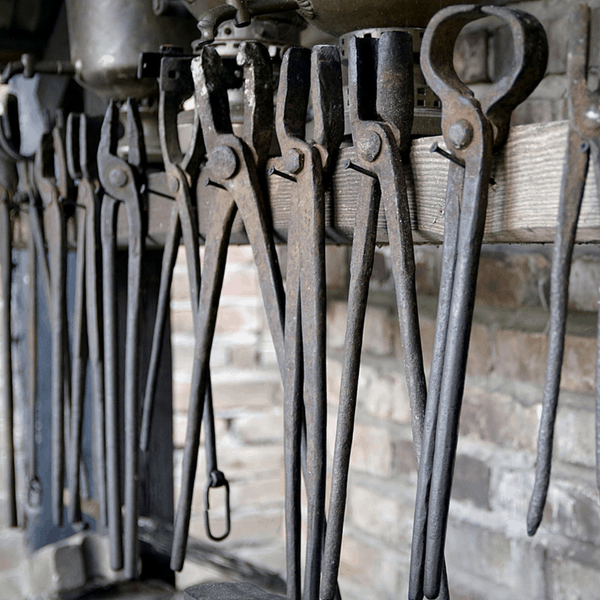
Safety Gear
Personal Protective Equipment (PPE)
Safety must be a priority in any blacksmithing environment. Proper personal protective equipment (PPE) is essential to prevent injuries while working with hot metals and tools. Essential PPE includes safety goggles to protect your eyes from sparks and debris, gloves to shield your hands from heat, and aprons to prevent burns from hot materials. Well-fitting boots with steel toes can protect your feet while working. Investing in high-quality safety gear creates a safer work environment and allows you to focus on your craft without worrying about potential dangers.
Respirators and Ventilation
In addition to personal protective gear, proper ventilation in your workspace is crucial. Blacksmithing can produce fumes and dust that may be harmful when inhaled. Using a quality respirator while working in enclosed spaces protects your lungs from harmful particles. Establish good airflow in your shop by utilizing exhaust systems or ensuring windows are opened during work. Proper ventilation and respiratory protection are essential for maintaining a safe and healthy work environment.
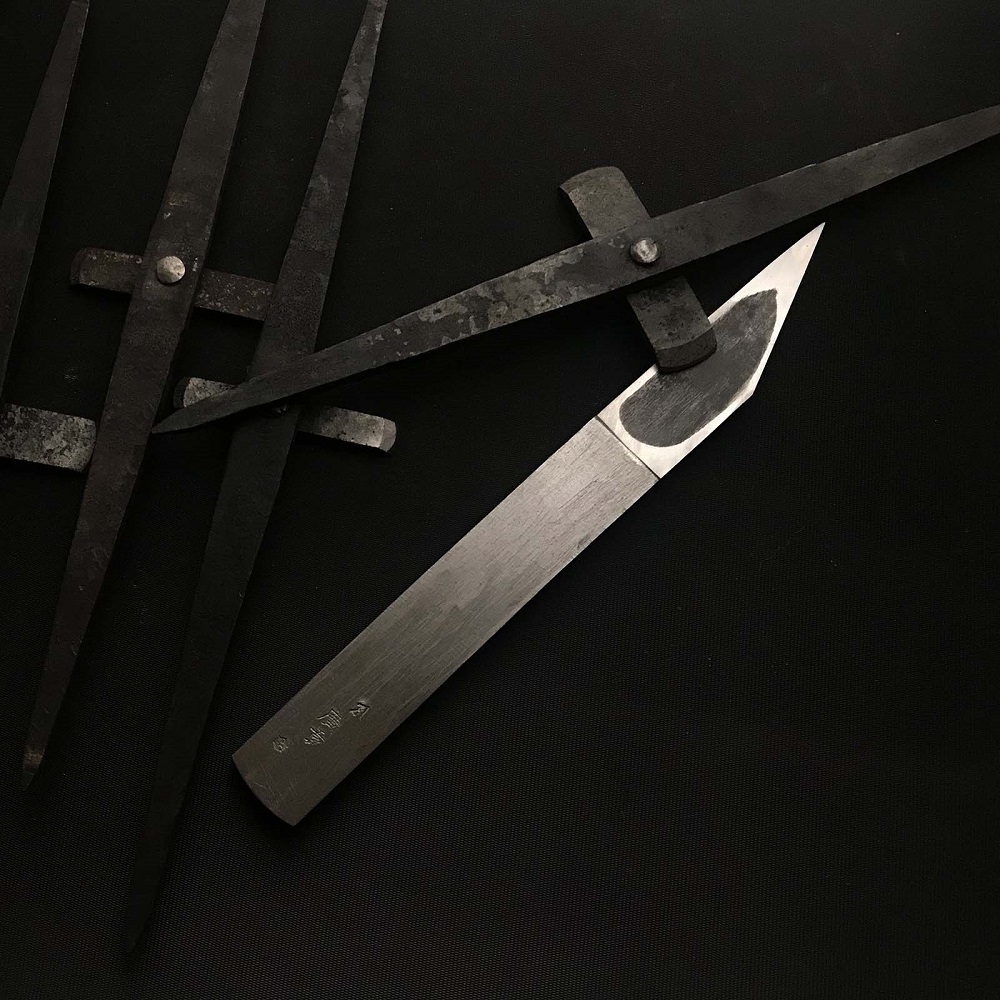
Tool Maintenance and Care
Regularly Inspect Tools
To ensure long-lasting performance, regular maintenance of blacksmith tools is essential. Periodically inspect all equipment for signs of wear, rust, or damage. Spotting issues early can prevent costly repairs or tool replacements. Clean tools after each use, especially hammers, tongs, and chisels, to remove debris and residue. Well-maintained tools not only perform better but can also be safer to use.
Sharpening and Repairing
Keeping your chisels, hammers, and files in top shape requires regular sharpening and maintenance. Sharp tools are key to producing precise work. Invest in a good sharpening stone or file to maintain the edges of your chisels. Hammers should be regularly inspected for dents or dings that may affect performance. Repairing or replacing any damaged tools promptly contributes to reducing hazards and facilitating efficiency in your work.
Building Your Blacksmithing Workshop
Selecting a Suitable Location
Creating an effective blacksmithing workshop involves thoughtful consideration of various factors, including location and space. Choose an area that provides adequate ventilation, especially since blacksmithing generates heat and smoke. A concrete floor is preferable, as it can endure the heat generated by forging. Ensure that there is enough room for your forge, anvil, and workbench. Planning your workshop layout carefully allows for efficient movement and setup, optimizing your workflow.
Organizing Your Workspace
Once you have chosen the location, organization becomes a cornerstone of an efficient blacksmithing workshop. Invest in shelving units, pegboards, or toolboxes to arrange your tools in an orderly manner. Keeping your workspace tidy minimizes frustration and enhances creativity. A well-organized shop allows you to find necessary tools quickly, helping prevent disruptions during your work. Create designated areas for specific tools and projects to streamline your workflow.
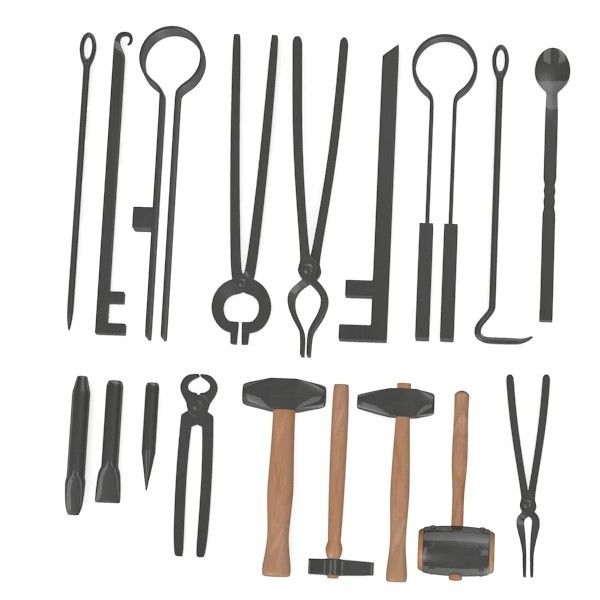
Understanding Techniques and Skills
Learning Basic Blacksmithing Techniques
Mastering basic techniques is crucial for any aspiring blacksmith. Start with fundamental methods such as heating, hammering, and cooling metal. Understanding these essentials lays the groundwork for developing your skills further. Participating in classes or workshops led by experienced blacksmiths can provide invaluable practical experience and guidance. These foundational skills will enable you to execute more complex projects effectively.
Experimenting with Advanced Techniques
As you grow more comfortable with basic techniques, consider exploring advanced methods. Techniques such as shaping, twisting, and welding will expand your creative possibilities. Learning about metallurgy and the properties of different metals can enhance your understanding and skills. Experimenting with new techniques and materials can also lead to unique creations that showcase your individuality as a blacksmith. Embracing ongoing learning and experimentation creates opportunities for personal growth and innovation.
Getting Involved in the Community
Joining Local Blacksmithing Associations
Engaging with a local blacksmithing community can provide valuable resources, support, and connection with fellow artisans. Many regions have associations that offer workshops, demonstrations, and access to shared resources. Becoming a member of such communities allows you to learn from others while sharing your knowledge and experiences. Networking with fellow blacksmiths can inspire creativity and foster friendships that enhance your journey in this craft.
Attending Workshops and Demonstrations
Workshops and demonstrations are excellent ways to expand your knowledge and skills. Many blacksmithing associations or local craftspeople offer hands-on events covering various topics. Participating in these activities gives you a chance to learn new techniques in an interactive format. Don’t hesitate to attend events or lectures that excite your interest; immersing yourself in the community can lead to unexpected growth and inspiration.
Conclusion: Embracing the Craft of Blacksmithing
In conclusion, understanding the must-have blacksmith tools empowers you to pursue this rewarding craft. From selecting the right forge and anvil to investing in quality hammers and tongs, every tool plays a crucial role in your work. The journey into blacksmithing can be a deeply fulfilling one, and equipping yourself with proper blacksmith tools and knowledge is the first step toward mastering this ancient art.
Safety, maintenance, and community involvement are significant aspects of cultivating your blacksmithing skills. Regularly maintaining your blacksmith tools and workspace ensures both comfort and efficiency in your craft. Engaging with fellow artisans encourages knowledge sharing and connection, enriching your blacksmithing experience. As you forge your path in this captivating craft, embrace the undeniable satisfaction of creating beautiful and functional metalwork. The journey of a blacksmith is as significant as the creations that are made, so enjoy every moment in the forge!
